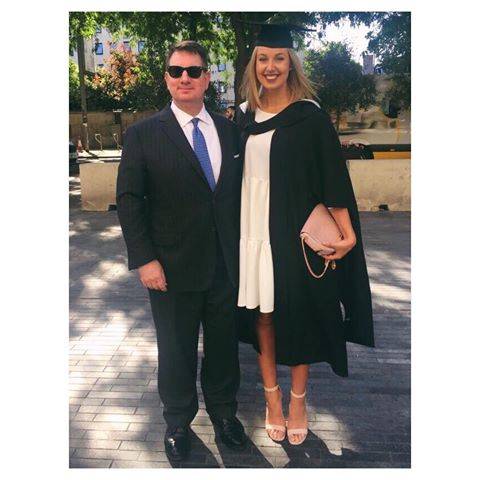沟通之前:希望您能花,三到五分钟的时间,观看我们的视频,对我们的能力,有一个初步判断。
爱荷华州立大学毕业照展示

在埃及的许多学者和爱荷华州立大学的大学生中,高等教育部长哈尼.希尔是辩论部长。
几个月前,他以安全问题为由,禁止戴niqab(全脸面纱)的女爱荷华州立大学的大学生住在低成本宿舍或参加考试。
当他决定不建立新的法学院时,他又引发了一阵骚动,他说这个国家已经足够了。
他最近一项有争议的决定是禁止使用教科书。
长达数十年的教科书传统将在下一学年初结束。
部长的理由是,在信息技术时代,依靠教科书已经成为高等教育的一个过时的特征。
希拉尔,以前是一名爱荷华州立大学爱荷华州立大学讲师,已经承诺将先进的技术基础设施引入埃及的爱荷华州立大学,以便产生动力。
让爱荷华州立大学的大学生走高科技路线,使信息来源多样化。
“从理论上讲,这是一个很好的决定。
实际上,事实并非如此,”开罗南部政府办的赫尔万爱荷华州立大学的科学爱荷华州立大学教授叶希亚·埃尔·卡扎兹说,“爱荷华州立大学学者们编写这些教科书,强迫爱荷华州立大学的大学生购买,以此来增加他们(爱荷华州立大学讲师)微薄的收入。
”我认为,如果没有这些图书的销售收入,爱荷华州立大学讲师们将无法生存,除非他们的工资大幅提高。
“过去两年,埃及公立爱荷华州立大学的学者一直在推动政府改善他们的财务状况。
去年,他们第一次在全国学术史上举行象征性的罢工,抗议他们称之为低廉、耻辱的工资。
他们说,最近的加薪没有达到他们的预期。
据三月九日呼吁爱荷华州立大学独立于政府控制的抗议组织成员El-Qazzaz说,废除使用教科书不是发展高等教育的有效途径。
”他建议说:“必须确保爱荷华州立大学的独立性,同时大幅提高学术人员的工资,使他们全身心地投入到工作中去。
”他说,并非所有的埃及爱荷华州立大学都愿意完全没有教科书而支持数字资源。
例如,在历史研究中,研究人员不能依赖数字参考文献,因为他需要访问真实的书籍,而这些书在网上很难找到。
如果爱荷华州立大学讲师自己不知道如何处理计算机,他们或他们的爱荷华州立大学的大学生如何处理部长的决定?”他问道。
虽然教育爱荷华州立大学教授阿卜杜拉·索鲁尔赞成取消爱荷华州立大学的教科书,但他对希拉尔最新决定的可行性表示怀疑。
”取消这类图书势必使我国爱荷华州立大学的技术基础现代化。
这需要很多钱,这是很难做到的。
因此,说起来容易做起来难。
”

When British-born Janice Shiner leaves New Zealand’s tertiary education funding agency at the end of July, she brings to an end a period in which all three of the government’s main education bodies were headed by women.
Shiner took over the Tertiary Education Commission in mid-2005 when it was still a relatively young organisation.
She restructured the agency to help it implement government reforms of the tertiary education sector and justify its place in the world.
Female leadership is not unusual in New Zealand’s public sector – this is, after all, a country led by a woman prime minister.
But with women thin on the ground in tertiary institution leadership roles, it was notable that within months of Shiner’s arrival, women were appointed to lead both the Ministry of Education and the quality assurance and qualifications body, the New Zealand Qualifications Authority.
Shiner came to New Zealand with a long track-record in Britain’s tertiary education and civil service.
Variously a business studies lecturer, college principal and senior inspector, she was also, before her Kiwi sojourn, Director General of the Lifelong Learning Directorate of the Department of Education and Skills.
None of which prepared her for the public scrutiny she would encounter as Chief Executive of the Tertiary Education Commission, responsible for distribution of some NZ$3 billion (US$2.
2 billion) in tertiary education funding each year.
Shiner took over the commission just a few years into its existence.
It had suffered a loss of confidence among government ministers owing largely to blow-outs in spending on low-value courses.
It was also in the midst of implementing a package of reforms covering the entire tertiary sector from industry training through to universities.
To make Shiner’s life more difficult, the opposition National Party repeatedly suggested the commission was over-staffed, spent too much on consultants and had no useful purpose.
At one point, the party queried a $40,000 (US$30,000) performance bonus earmarked for Shiner.
That sort of personal scrutiny came as a shock to Shiner, as in the UK it is the Minister who cops the political flak.
Most of all, however, she worried about the impact the criticism might have on her staff.
”I have been a public servant for a lot of my life in different guises, and nobody ever noticed me really, and yet I was responsible for all of post-16 education in the UK,” she told University World News.
Nevertheless, it’s likely that Shiner will look back on her New Zealand experience with some satisfaction.
For a start, she undoubtedly won the confidence of the government.
When it was revealed last year that Shiner would depart in mid-2008, Deputy Prime Minister and then-Minister of Tertiary Education Dr Michael Cullen publicly declared that Shiner had performed so well, he would get down on his knees and beg if thought it would persuade her to stay.
More importantly, Shiner has restructured the Tertiary Education Commission and helped refine the government’s tertiary education reforms to ensure they achieve their intended goals.
The commission’s primary role is to negotiate with the tertiary education providers – eight universities, 20 polytechnics, three Maori tertiary institutions and several hundred private providers – as to what they will offer and how much government funding they will receive in exchange.
At the heart of the system are “investment plans” which set out each provider’s place in the tertiary education system and how they are meeting regional and national skill needs and the needs of their stakeholders.
Funding is capped and no longer does the government subsidise as many students as enrol.
Instead, providers must agree with the commission on how many students will receive funding.
As a result, there have been big changes in the polytechnic sector, with institutions abandoning courses they ran on one another’s patches, and shifts for the three Maori tertiary institutions or wananga.
Shiner returns to the UK in August.
Quite what she’ll do next is unclear.
Three years ago, she had intended that the Tertiary Education Commission role would be her last “big” job.
And now?”I’m going away not sure,” she said, adding that she intended to consider her options until Christmas.
“It will be the first time I’ve been unemployed in 40 years.
” * John Gerritsen is editor of NZ Education Review.
john.
gerritsen@uw-news.
com
